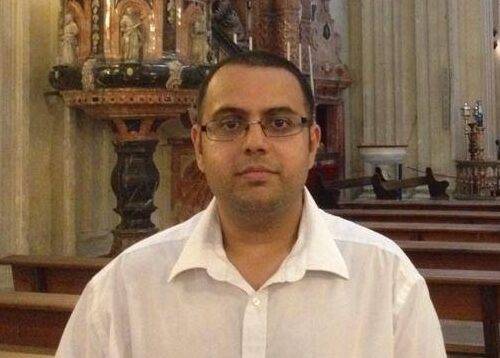“A great city surrounded by beautiful gardens. It is excellently situated so the goods brought to here coming from many regions. Latin Merchants specifically Genevis go there to buy the goods that come from foreign lands,” the Venetian traveller Marco Polo wrote of Tabriz in 1275.
Visitors have been coming to the city for a few millennia and archaeological evidence uncovered near the historic Blue Mosque suggests human settlements going back to distant antiquities. Today Tabriz is the capital of the Iranian province of East Azerbaijan and boasts a population of 1.7 million. The majority of the inhabitants are Azerbaijani and speak a Turkish dialect known as Azeri Turkic, a close relation of Turkish used in Turkiye. While most Azeri speakers claim to understand Turkish, it is common for Turks to say they struggle to understand Azeri. Other groups who call Tabriz their home include Persians – who make up the majority of Iran’s population – Armenians, Assyrians and various peoples from the Caucasus. A diverse city, whose Bazaar was declared a UNESCO World Heritage Site, Tabriz excites, delights and intrigues the modern traveller.
The wonders of the city and its Bazaar also delighted the pre-modern traveller, Ibn Battuta, a 14th century North African explorer who wrote: “One of the finest bazaars I have seen the world over. Every trade is grouped separately in it. I passed through the jewellers’ bazaar, and my eyes were dazzled by the varieties of precious stones that I behold.” While 17th century French explorer, Jean Chardin, was also smitten with the city claiming it had the “best and most magnificent markets of Asia.” Trade was a central draw to the city for many in the pre-modern period, it was considered one of the key cities on the Silk Roads’ route, which ran from China across the Middle East to Europe.
![The Grand Bazaar of Tabriz was declared a UNESCO World Heritage Site in 2010. [ATTA KENARE/AFP via Getty Images]](https://i0.wp.com/www.middleeastmonitor.com/wp-content/uploads/2023/02/GettyImages-950829010-scaled-e1675437049914-500x333.jpg?resize=500%2C333&ssl=1)
The Grand Bazaar of Tabriz was declared a UNESCO World Heritage Site in 2010. [ATTA KENARE/AFP via Getty Images]
However, Tabriz has also experienced many devastating events and has frequently been destroyed as a result of invasions, natural disasters and other calamities. In 791, an earthquake left the city in ruins and Zubaidah, wife of the Abbasid Caliph Harun Al-Rashid, rebuilt it and beautified it so much that some have erroneously credited her with founding Tabriz.
![Constitutional house is one of the most famous and honorable historical houses of Iran, which was the place of fateful decisions by constitutional leaders at the climax of constitutional revolution [Visit Iran]](https://i0.wp.com/www.middleeastmonitor.com/wp-content/uploads/2023/02/Constitutional-house-Tabriz.jpg?resize=500%2C333&ssl=1)
Constitutional house is one of the most famous and honorable historical houses of Iran, which was the place of fateful decisions by constitutional leaders at the climax of constitutional revolution [Visit Iran]
In the 20th century Tabriz gained a reputation as the city of ‘firsts’ due to its rapid modernisation. The first printing press, publication houses, public libraries, hotels, cinemas, schools, telephones, firefighters and power plants among other things in Iran began their life in Tabriz. The city was also at the centre of Iran’s Constitutional Revolution in 1905. The revolution would lead to democratic reforms, the establishment of national parliament, a constitution and the principles of freedom of speech. Constitutional House, located next to Tabriz’s Bazaar, was a key meeting point for activists, journalists, politicians and leaders during the revolution. The city was also key to the 1979 Iranian Revolution which gave rise to the Islamic Republic.
It remains the beating heart of Iran, likely to play a role in future key events in the country’s future.



![Iran. Tabriz. Blue Mosque Originally built in 1465 by Jahan Shah who headed the Turkomen Kara Koyunlu dynasty, the Blue Mosque has been reportedly destroyed and rebuilt many times. [ Hermes Images/AGF/Universal Images Group via Getty Images]](https://i0.wp.com/www.middleeastmonitor.com/wp-content/uploads/2023/02/GettyImages-629586353-scaled-e1675436329680.jpg?w=797&h=531&ssl=1)
![Iran. Tabriz. Blue mosque Originally built in 1465 by Jahan Shah who headed the Turkomen Kara Koyunlu dynasty, the Blue Mosque has been reportedly destroyed and rebuilt many times. [ Hermes Images/AGF/Universal Images Group via Getty Images]](https://i0.wp.com/www.middleeastmonitor.com/wp-content/uploads/2023/02/GettyImages-1318813713-scaled-e1675436320969.jpg?w=395&h=264&ssl=1)
![Iran, Tabriz, Blue Mosque Originally built in 1465 by Jahan Shah who headed the Turkomen Kara Koyunlu dynasty, the Blue Mosque has been reportedly destroyed and rebuilt many times. [ Hermes Images/AGF/Universal Images Group via Getty Images]](https://i0.wp.com/www.middleeastmonitor.com/wp-content/uploads/2023/02/GettyImages-929371956-scaled-e1675436313292.jpg?w=395&h=263&ssl=1)










